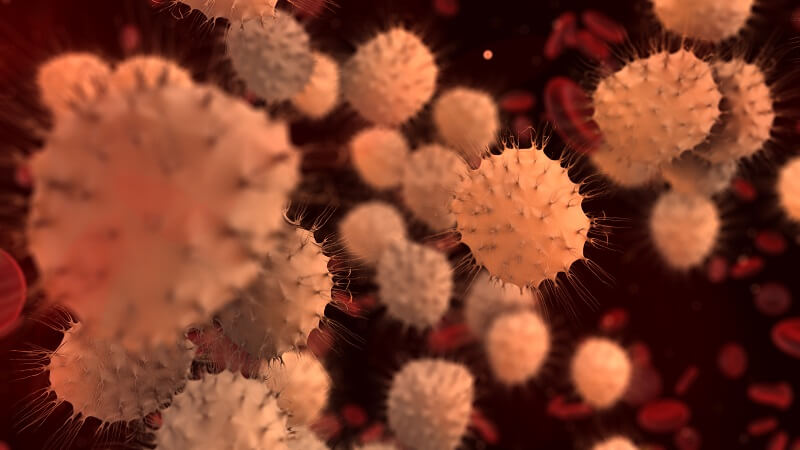Definition
In chemistry, “adhesion” refers to the tendency of some substances to cling to other substances. The term comes from the root words “ad” for “other” and “hesion” for “to stick to.” Adhesion is usually caused by interactions between the molecules of the two substances. When applied to biology, adhesion is usually in reference to the process through which cells interact with one another.

Adhesion in Biology
Water Molecules
The most important adhesive substance on Earth is water. Water molecules are highly polar – meaning that one part of the molecule has a slight negative charge, while the other has a slight positive charge.
These properties allow water to interact strongly with any other charged or polar substances. Because atoms of opposite charges are actively attracted to each other, different parts of water molecules are attracted to both positive and negative ions and molecules. On a large scale, this means that water will stick to many substances.
Water molecules also stick to each other for the same reason, because all water molecules are polar. The tendency of similar (or identical) molecules to stick to one another is called called “cohesion.”
Capillary Action
You have seen capillary action if you have ever dipped the edge of a paper towel into a puddle of water. You’ll notice that the water races up the paper towel quite fast, eventually soaking the whole thing even if you have only dipped a corner into the liquid!

This process is the adhesion of water in action: water molecules stick to charged molecules within the paper. This is the same mechanism that allows trees to draw water and minerals up from the soil to nurture their leaves. Trees are made of the same materials as paper (or rather, paper is made from trees), and trees have tiny channels inside of them that suck up water in just the same way as a paper towel.
If water was not polar and did not have the property of adhesion, trees as we know them could not exist!
Cell Adhesion
To create tissues, cells have to interact with one another and with the extracellular environment. They do so through adhesion.
Cell adhesion involves molecules on the surface of cells called cell adhesion molecules (CAMs). These molecules either directly interact with adjacent cells or can make contact with the extracellular matrix, which is the gel-like network of compounds that provides support to cells throughout an organism.
Cell adhesion is fundamental for the formation of multicellular organisms, as it allows for the maintenance of tissue and organ structure, as well as communication between cells. Cell adhesion is essential for a multitude of physiological processes, such as signaling, tissue development, homeostasis, and cell migration. Thus, its dysregulation is associated with a number of diseases and is therefore medically relevant. Of particular note is the link between cell adhesion and cancer.
Cell Adhesion in Cancer

Cell adhesion is commonly disrupted in cancer. When cells in a tumor have reduced cohesive properties, they can come loose from the tissue and enter the circulatory system. This is how cancer cells can migrate to other sites in the body, a process called metastasis. For example, CAMs called cadherins are frequently found to be deregulated in breast cancer.
Quiz
